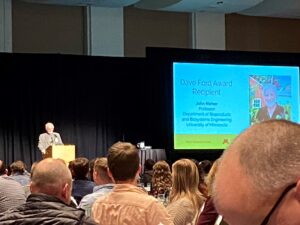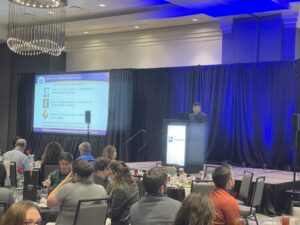Membership Services
- Customer service support and help to AIH members and key stakeholders by answering phones, emails and managing all AIH inquiries.
- In collaboration with the Executive Director, develop and execute an overall marketing plan for membership recruitment and retention; evaluate for effectiveness.
- Manage and execute monthly webinars (Zoom), including PowerPoint slides and post-webinar communications.
- Coordinate AIH Board member attendance at occasional partner conferences
- In collaboration with the Executive Director, support AIH training and non-conference meetings such as pre-meeting logistics, annual awards preparation, booth materials coordination, and other duties as assigned.
- Provide governance support for the Board of Directors and Committee meetings, including assembling the final agenda, Zoom support, meeting minutes, calendar and Doodle scheduling, board roster, and annual calendar.
- Staff liaison to the Diversity, Equity, and Inclusion Committee, Webinar Committee, Communications Committee, and Board of Registration.
- Assist AIH Technical Committees with meeting logistics (Zoom) and SharePoint folders
- Manage the member life cycle of AIH Certification, Recertification, and recruitment toward certification.
- Administer multiple choice online exams several times a year for certification, using questions prepared by the Board of Registration.
- Email membership renewal notices and mail notices annually.
- Coordinate with Website and Marketing Consultant to publish announcements for awards, calls for nominations, social media, and various AIH announcements.
Certification Database Management
- Manage all aspects of the Association Management Software, including Certemy and AIH website.
- Update records and maintain data quality; maintain membership reports (IQAs) and statistics for reporting.
- Process all payments, including membership renewals, membership recertifications, and Board member expenses.
- Prepare monthly and quarterly reports for the Board of Directors, CEO, Marketing Consultant, and CFO Services/auditors.
Requirements – The first three points are required
- Bachelor’s degree – Required
- Membership Management and Certification Experience – Required
- Association Management Software Experience – Preferred
- Certemy Database Preferred
- Team player
Benefits
- Virtual position
- 100% employer-paid health insurance upon start
- 401K match after two year of service
- 10 vacation days, accrual of sick days, 11 paid holidays, and paid time off between Christmas and New Years Eve
- 2 paid time off days for volunteer work of your choice
- Flexible holiday exchange program
Please send a short cover letter and resume to dresden@awra.org with the subject line: AIH Membership and Website Manager/Director






 Dr. Richard Koehler, PH, Ph.D., CEO (Visual Data Analytics, LLC)
Dr. Richard Koehler, PH, Ph.D., CEO (Visual Data Analytics, LLC)  Professor John Nieber, PH, PE, Ph.D., Professor (University of Minnesota)
Professor John Nieber, PH, PE, Ph.D., Professor (University of Minnesota) 
 AIH Awards at the AWRA 2023 Annual Water Resources Conference
AIH Awards at the AWRA 2023 Annual Water Resources Conference

